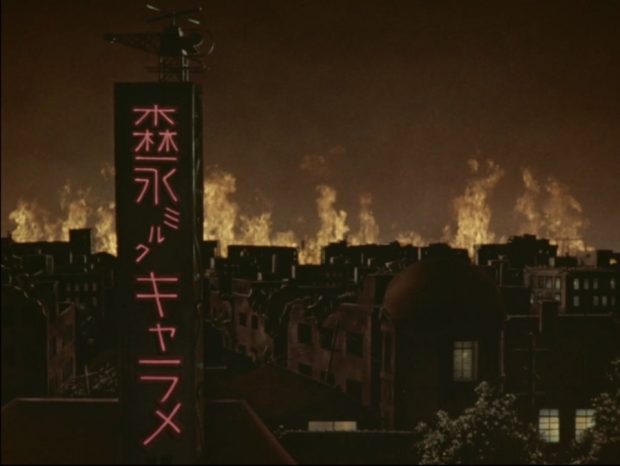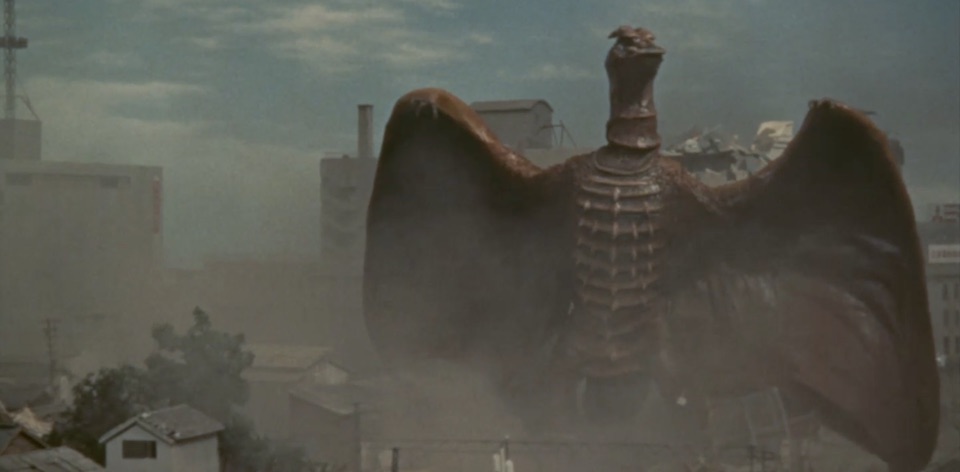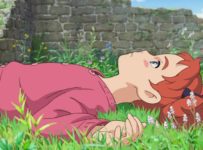If Godzilla is the King of the Monsters, then arguably Rodan is the second born prince. In fact, the original Japanese title for his debut film (空の大怪獣 ラドン or Sora no Daikaijū) is where we get the now-ubiquitous term for “large monster.”
RODAN (or Giant Monster of the Sky: Rodan if you prefer) came just two years after Ishirō Honda’s Godzilla, but the filmmaker had been even more prolific than his frequent collaborator Akira Kurosawa in that time. Indeed, the six films he put out ranged from the comedic Love Makeup (1955) to the romantic short feature People of Tokyo, Goodbye (1956). There was also another kaiju film in this time: Half Human (1956), a largely forgettable monster snowman film Toho withdrew from circulation after it drew the ire of the Buraku Liberation League.

Honda’s creative partner on this enterprise, sci-fi writer Ken Kuronuma, drew on the unlikeliest of sources for his screenplay: the death of Kentucky Air National Guard pilot Captain Thomas F. Mantell in 1948, allegedly in pursuit of a UFO. Here’s it’s translated into a couple of missing miners, with one of them having presumptively killed the other. It soon comes to pass that the latter’s body turns up, and giant insect things start running amok in Kyushu.
For most monster movies, this would be the extent of the narrative development, but Kuronuma and Honda spend most of the first act establishing a sense of place and the (mostly male) characters. Of course, they do this with some of the more laughable creatures in monster movie history, perhaps challenged only by the classic years of Doctor Who. The titular monster doesn’t show up until much later in the piece, almost making the entire first and second act a mere appetiser.

Rodan’s arrival has parallels and influences in more modern sci-fi as well. The Memory: The Origins of Alien documentary points to the narrative similarities between Ridley Scott’s film and Them! (1954) or Planet of the Vampires (1965). There’s arguably a line to be drawn back to RODAN’s plot as well. Shigeru Kawamura (played by Godzilla alum Kenji Sahara), a tunnelling and safety engineer trapped in the mines from the initial bug attack, emerges with amnesia. Some bird eggs not only trigger a flashback, but a birthing sequence that may sound familiar: a man alone in a cave, surrounded by creatures, and a giant ancient creature emerging from an egg.
From here we’re into more familiar monster movie territory, with the supersonic fly-by of Rodan announcing his arrival. While sound engineer Ichiro Minawa’s effect isn’t quite as iconic as Godzilla’s roar, and the flying effects aren’t as stylish in their simplicity as the jet engines of Motoyoshi Oda’s Godzilla Raids Again (1955), Rodan is a sufficiently archetypal threat. Even the cast is familiar: having played the eye-patched and ill-fated scientist in Godzilla, actor Akihiko Hirata continues his appearances as a slightly manic man of science. (He would become typecast in this role for the rest of his career, not to mention Haruo Nakajima inside the monster suit).

Stylistically, RODAN is a curious beast as well. As Toho’s first kaiju film in colour, Honda and cinematographer Isamu Ashida make effective use of the new medium. Two key moments stand out for me. Early in the film, the bright red of a bloodied helmet is a powerful visual reminder of the largely off-screen death of a fighter pilot. Yet it’s the final few scenes of the film that might be the most powerful. Reminiscent of the vista of a devasted Tokyo, and remembering this is still only a decade on from the end of the Second World War, the flickering neon signs contrasted against a burning Fukuoka are nothing less than chilling.
Finding an audience outside Japan – with the recut and dubbed Rodan! The Flying Monster! in 1957 – Rodan would return several times in the future, starting with Ghidorah, the Three-Headed Monster (1964) and most recently in the US-produced Godzilla: King of the Monsters (2019). Even Honda has claimed several times that it was one of his favourites of the monster films. Taking this 1956 movie by itself, you’d be forgiven for wondering how that came to be. Yet despite the goofiness and leisurely opening, there’s at least as many of the hallmarks of the classic American drive-in favourites of the same era.




